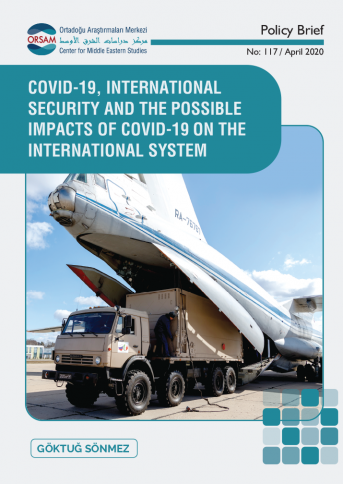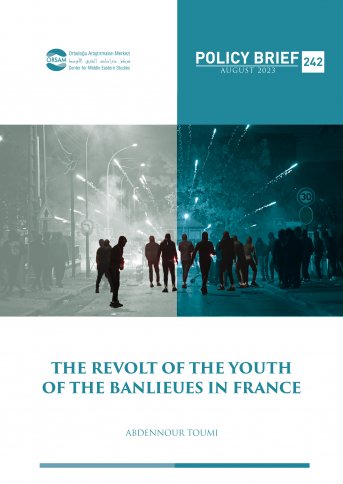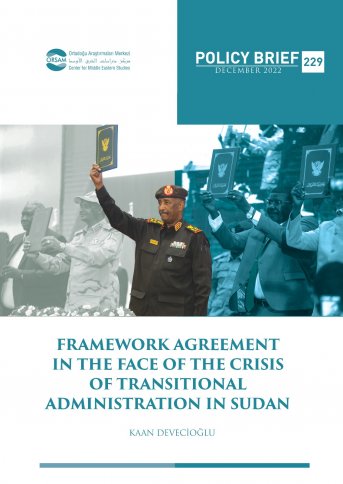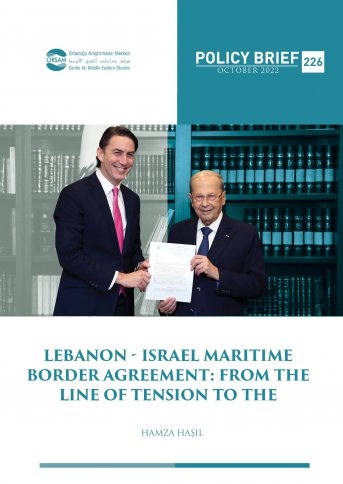
COVID-19, International Security and the Possible Impacts of COVID-19 on the International System
The unprecedented rise of the concept of human security, which has gained even more significance especially through migration and refugees, will quite possibly be witnessed in the upcoming years due to the COVID-19 pandemic that has emerged in the last months of 2019. The pandemic has increased its severity day by day and no remarkable progress towards a solution has yet been made. In addition to human security, the problem seems to have a meaning well beyond the pandemic because of the threats it poses to critical infrastructures and cyber systems as well as prospective stagnations in several sectors of strategic importance for the sustainability of states. A disease that spreads so easily and proves fatal at such a level may become, not only a global health problem, but also a national, regional and global security threat. depending on its scale. The situation we are experiencing right now is rapidly evolving into such.
Significant risks, such as with the security of critical infrastructures and cyber systems, regime security, the sustainability of strategic sectors and the rise of suspicion and xenophobia within the society, will be more intensive in the coming years. As a result of pandemics, countries may quickly return to their own resources, close their borders and minimize their interaction with one another. On the one hand, this pulling back has the potential to serve, based on interdependence theory, as a catalyst that eases the tension in the coming years. On the other hand, some countries such as Russia and China seek to create rifts in the international system through their aid policies toward these countries, which have turned inwards. In general, epidemic diseases are likely to have negative effects on human security, financial sustainability, military personnel and structures, critical infrastructures, etc. The COVID- 19 outbreak, the second-largest pandemic case following the Spanish flu in the 20th century has the potential to display such a feature as well. Accordingly, this study will prepare the groundwork, create a basis for future studies, and provide a general framework for the threats and possible measures that epidemic diseases may pose to security. Later, in this paper, a future projection will be put forward through the evaluation of which topics will become more controversial in the world order after the pandemic.
Although it has a relatively low mortality rate of 3.5 percent compared to SARS and MERS viruses, the mortality rates of which are 9.6-11 percent and 34 percent respectively, COVID-19 has been one of the most important epidemic diseases of the 20th century with its high spread ability and pace of its transmission. The comparison with the Black Plague that caused the death of 200 million people or the Spanish flu which caused the loss of 45 to 50 million lives and the assessment that 100 to 240 thousand people will die in the best scenario in the USA, for example, are important data on the severity of the disease.
In the context of the Middle East, especially Iran’s being inadequate and late to take measures against the disease, keeping the Shia religious centers open to visitors in the country has made the country a base for the outbreak in the region. The factors, such as the movement of Shia militia groups out of Iran to the region, the visits by Shia population from the region entering into the country, and the mobilization of the clergy, may be argued to have played a big role in the rapid spread of the disease in a broad territory extending from Afghanistan to Lebanon. The widespread viral presence in Iran has been one of the factors that has caused the spread of the disease to Iraq and Syria, causing many military and political figures to catch the disease. Considering the route and the destination of the Shiite militias, it seems likely that Syria will be another important epicenter where the size of the outbreak cannot be measured due to the current climate. Syria, where many Shiite foreign fighter groupings such as Zaynabiyyoun, Fatemiyyoun, Nujaba, Hezbollah and so on are deployed, “imports” the virus not only from Iran but also from Lebanon, Iraq, Afghanistan, and Pakistan through the fighters coming from those countries, therefore magnifying the risks associated with the spread the virus to these countries as these fighters are sent dead or alive back to their countries. Indeed, even the Wagner fighters are reportedly getting sick as a result of this structure of interaction. Italy has recently become “Europe’s Wuhan” and become a new epicenter of the disease. The fact that land and air borders are not closed within the Schengen area has been another factor contributing to the rapid spread of the disease in the continent. As well as the closed structure of the Chinese regime which kept the world unaware of the disease for a while, the mobility within the Schengen area and the effectiveness of global organizations such as the WHO and regional organizations such as the EU are likely to be among the most important discussion topics in the post-pandemic period.








